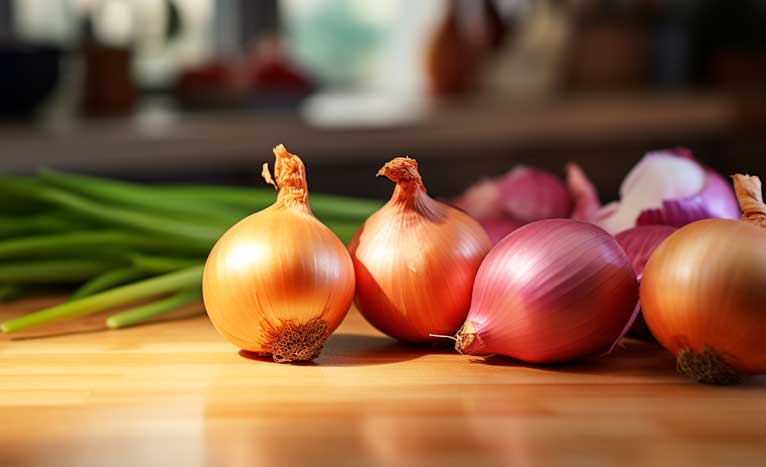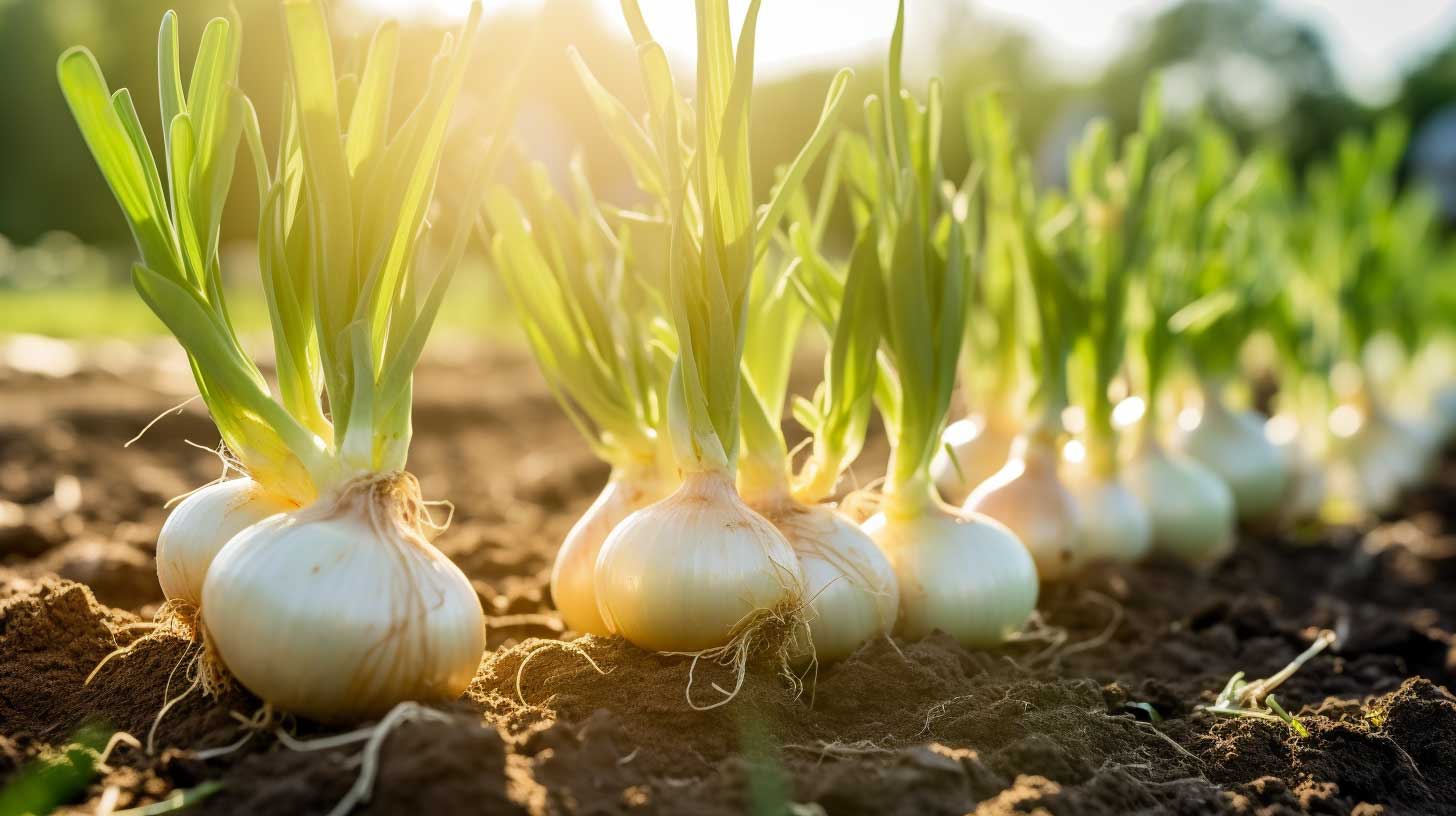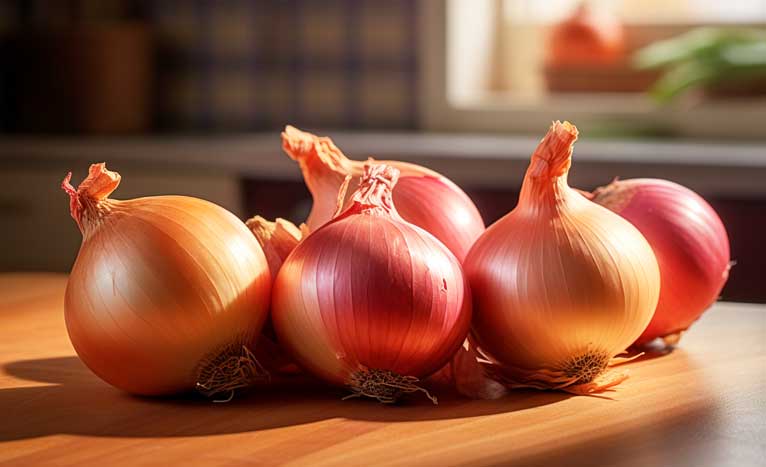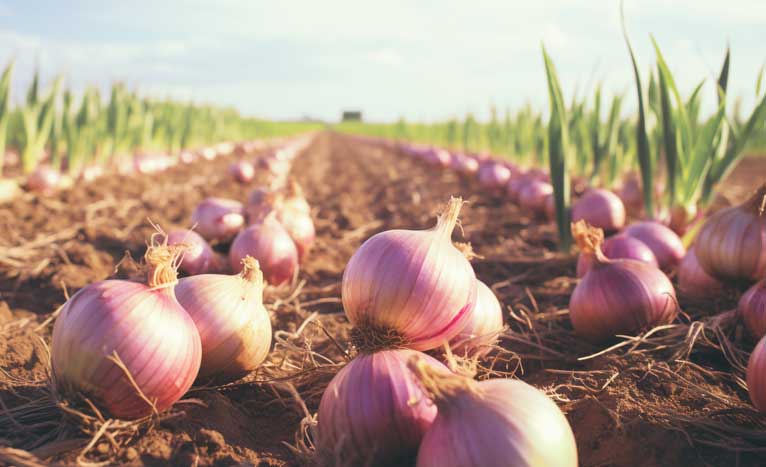As a homesteader, there's nothing quite like the satisfaction of growing your own food. From potatoes to onions, the journey of cultivating these humble crops is not only rewarding but also a gateway to flavors that elevate our culinary experiences. To me, the most important part of having a garden is freeing yourself of the system. The more you grow, the less you depend on your grocery store! In this blog post, I will share my personal relatable story about growing onions on my homestead and provide you with valuable insights on how to grow onions successfully.

The Aromatic World of Onions
Onions, the staple ingredient in countless recipes, are more than just a flavor enhancer. They come in various shapes, sizes, and colors, adding visual appeal and distinct tastes to our dishes. Whether you're fond of the pungent bite of red onions or the milder sweetness of Vidalias, exploring the aromatic world of onions can be a delightful culinary adventure.
Truly, one of the best parts of growing a garden (there are a lot of “bests”) is that you can grow different varieties than what is offered in the store. I used to think the onions offered in the store were the only kinds of onions—wrong!
Selecting Onion Varieties
When it comes to growing onions, choosing the right variety is essential. Different varieties have different growth habits, storage capabilities, and flavor profiles. Some popular onion varieties include Yellow Sweet Spanish, White Lisbon, and Red Baron. Consider your climate, preferred taste, and storage needs when selecting the varieties to plant on your homestead.
Community is everything and this even applies to when you are growing your garden. When deciding what variety of onions to grow, consult with your local gardeners or visit a nursery. Oftentimes, nurseries will sell varieties that thrive in your local climate. This is important because you don’t want to spend time growing and cultivating a variety that doesn’t do well where you live. People will be happy to share their experience with you!
Preparing the Soil
Before planting onions, it's important to prepare the soil properly. Onions thrive in well-drained, fertile soil with a pH level between 6.0 and 7.0. Start by removing any weeds or debris from the planting area. Loosen the soil with a garden fork or tiller, breaking up clumps and removing rocks. Incorporate organic matter such as compost or well-rotted manure to improve soil structure and nutrient content.
I’ve learned that loose soil is almost always beneficial. If you think of compact and clumpy soil, how can anything grow if it is in an compact, tight environment? Loosen your soil to prepare for onions!

Planting Onions
Onions can be grown from seeds, sets (small onion bulbs), or transplants. If you're starting from seeds, sow them indoors 8 to 10 weeks before the last frost date. Transplants and sets can be planted directly in the ground. Dig shallow furrows or holes, spacing the onions about 4 to 6 inches apart. Ensure that the onion neck is level with the soil surface, as burying it too deep can hinder growth.
If you want to seed start, that’s great! If you want to skip seed starting onions, then head to your local nursery and pick up some starts. Sometimes the convenience of purchasing onion starts will save you time and hassle, but keep in mind starts will be more expensive than starting from seed.
Providing Adequate Care
Proper care is crucial for the successful growth of onions. Onions require consistent moisture, especially during dry periods. Water them deeply once or twice a week, aiming for about 1 inch of water per week. Mulching around the plants will help conserve moisture and suppress weed growth. Fertilize the onions with a balanced fertilizer according to package instructions, ensuring a steady supply of nutrients.
Managing Pests and Diseases
Like any other plant, onions are susceptible to pests and diseases. Common onion pests include onion thrips and onion maggots. Implement preventive measures such as using row covers, practicing crop rotation, and maintaining good garden hygiene to reduce the risk of infestations. Keep an eye out for signs of diseases like onion white rot or downy mildew, and promptly take action to minimize their spread.
Harvesting and Storing Onions
Harvesting onions at the right time ensures optimal flavor and storage potential. Harvest the onions when the tops have fallen over and started to dry out. Carefully loosen the soil around the bulbs and gently lift them from the ground. Allow the onions to cure in a dry, well-ventilated area for a couple of weeks. Once they are fully cured, trim the tops and store the onions in a cool, dry place with good airflow.
Definitely be sure to lightly dig them out of the soil before pulling. If you pull the onion out too hard, it can damage the bulb and make it susceptible to rot. Take your time and enjoy the sunshine while doing so!
Cooking with Homegrown Onions
With a bountiful harvest of homegrown onions, it's time to bring their flavors to life in your kitchen. From classic onion soups to caramelized onions for sandwiches, the possibilities are endless. Experiment with various cooking techniques and savor the depth of flavor that comes from using fresh, homegrown onions in your culinary creations.
I personally love to put onions into stews and can them up. You can check out my video on how I canned beef stew on my TikTok I also freeze onions and use them as needed in recipes throughout the year!

Go grow some onions
Growing onions on your homestead is a gratifying experience that allows you to explore a world of flavors while connecting with nature. By following the steps outlined in this blog, you can cultivate your own delicious onions and elevate your cooking to new heights. Remember to choose the right varieties, prepare the soil, provide adequate care, and harvest and store the onions properly. Embrace the journey and enjoy the rich rewards of growing onions on your homestead.
FAQs
Can onions be grown in containers?
Yes, onions can be grown in containers, provided the container has sufficient depth for root development.
How long does it take for onions to grow from seed?
Onions grown from seeds typically take around 80 to 120 days to reach maturity, depending on the variety.
Are there any companion plants that benefit onions?
Yes, onions benefit from companions like carrots, lettuce, and herbs such as parsley and chamomile.
Can I grow onions from kitchen scraps?
While onions can sprout from kitchen scraps, growing them to full-sized bulbs is challenging. It's best to start with seeds, sets, or transplants for a successful harvest.
How long can onions be stored?
When stored properly in a cool, dry place, onions can be stored for several months, with some varieties lasting up to a year.

